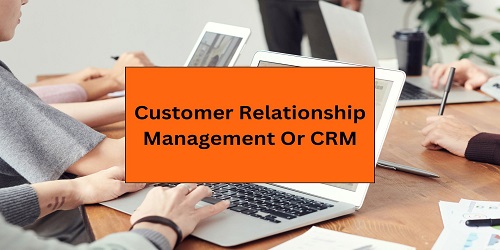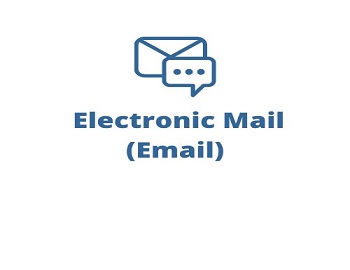Table of Contents
What is Customer Relationship Management Or CRM?
Customer relationship management, or CRM, is a software program that enables business owners to easily keep track of all correspondence and develop relationships with their leads and customers.
CRM may also be defined as the central business strategy that unifies internal operations and networks with external ones in order to generate and profitably deliver value to specific customer segments.
With the help of CRM software, your company’s various departments (sales, marketing, and customer support) can provide each client with an exceptional, individualized experience.
What does a CRM do?
Until recently, businesses used spreadsheets, email, address books, and other compartmentalized, frequently paper-based CRM solutions to track customer-related data. People within and across teams were unable to easily find and share the most recent information due to a lack of integration and automation, which slowed their capacity to develop marketing campaigns, pursue new sales leads, and provide customer service.
Rewind to the present day. CRM programs automatically gather a wealth of data on both current and potential customers. Email addresses, phone numbers, company websites, social media posts, purchase histories, and service and support tickets are all included in this information. After integrating the data, the system creates consolidated profiles that can be shared with the right teams.
Customer Relationship Management systems can also exchange data with other business tools like apps for document sharing and online chat. Additionally, they have business intelligence and artificial intelligence (AI) features built-in that quicken administrative processes and offer useful insights.
In other words, modern Customer Relationship Management tools provide immediate visibility into and access to everything necessary to establish, enhance, and maintain customer relationships for teams in sales, marketing, commerce, field service, and customer service.
Types of Customer Relationship Management Systems:
(1) Operational CRM Systems- The purpose of operational CRM is to facilitate the execution of sales, marketing, and customer service functions. They help streamline and manage all the ways your company interacts with customers. This kind of operational CRM helps generate new leads, nurtures them into customers, and retains them through ongoing marketing communications and excellent customer service. Its main objective is to increase customer acquisition and retention. Businesses of all sizes use operational CRM systems and frequently enable time-saving CRM automation including Marketing automation, Sales automation, and Customer service automation.
(2) Analytical CRM Systems- An analytical CRM system allows you to track the progress of your prospects through your sales funnel, in contrast to an operational CRM system that aids in bringing leads into it. Analytical CRM systems collect, archive, and analyze customer data to reveal insights into how customers engage with your company. This information enables you to evaluate the success of your marketing, sales, and customer service initiatives and modify your strategy as necessary. Additionally, analytical CRM can generate performance reports on sales history and customer service satisfaction scores, enabling you to leverage the strengths of high-performing team members and identify areas for employee growth. Businesses of all sizes use analytical CRM, which is especially helpful for those looking to enhance their customer relationship management procedures.
(3) Collaborative CRM Systems- Teams from sales, marketing, and customer support frequently work together on client accounts in a large company. By facilitating communication between departments, a collaborative CRM aims to enhance customer experience and streamline business processes. Large organizations—companies with sizable customer bases where multiple employees handle individual client accounts—are particularly fond of collaborative CRM.
(4) Strategic CRM Systems- Together with collaborative CRM, strategic CRM offers many of the same features. The distinction is that while collaborative CRM concentrates on short-term enhancements, strategic CRM focuses on sustained customer engagement. Supporting customer retention and boosting customer loyalty is their main objective.
Development of CRM Strategy:
An effective CRM system should be employed gradually. CRM entails learning about consumer behavior and the most effective methods for contacting current customers based on the information gathered about them. For instance, a current customer should be your top priority when implementing a CRM system because you have historical information about their purchasing patterns from receipt records. It is essential to conduct thorough research on the available software options and assess your budget before deciding to implement a CRM system that will effectively support business growth.
(1) Gather the customer information that is essential to your business in order to retain customers. For example, gather emails and social media account information after a sale. A CRM system must be able to store and maintain contact information. Based on the customer’s past responses to company promotions and invitations, a manager will use the CRM system to determine the best way to contact the customer.
(2) Based on your research, choose the CRM system that is most effective for your business. Decide how you’ll track your customers with the system. For example, you can track frequent-buyer habits. Also, for greater profit potential, obtain a CRM system that is the easiest and most effective to use when reviewing and storing data. For instance, implementing an efficient CRM system should include web-based access for remote management capabilities.
(3) To purchase and implement the best system you can afford, determine your budget.
(4) Get software training from a professional. Hire a consultant who can show you how to operate the system more efficiently. For instance, finding someone with knowledge of the software chosen to learn automation tips. Use social media to find a consultant, or look for an IT professional at your local college.
(5) Employ the CRM system in stages. For example, implement a Customer Relationship Management system that monitors the purchasing frequency of particular items. A good CRM system will let you know about customer behavior at key moments, like around holidays. When this phase is successful, you can start incorporating more elements that reach out to less-frequent customers.
5 Key Benefits Of CRM For Your Business:
(1) Better customer service- Although modern Customer Relationship Management Software has a wide range of capabilities, its primary purpose remains the same: to enhance business-customer relationships. All of your contacts are managed by a CRM, which also collects crucial customer data such as demographics, purchase histories, and previous messages across all channels and makes it readily available to anyone in your company who needs it. This ensures that your employees have all they need to know about the customer at their fingertips and can provide a better customer experience, which tends to boost customer satisfaction.
(2) More Customers and Revenue- Customer Relationship Management Systems aid the business in efficiently identifying potential customers. The company can develop new strategies to decide which demographics it should target to get a larger customer base as it keeps track of current customer profiles. A company can more effectively coordinate marketing and promotional campaigns by using CRM data to make sure that existing customers are not the target of such promotions. Through the implementation of loyalty programs, CRM also guarantees greater customer retention.
(3) Automate Mundane Tasks- Customer Relationship Management Technology can significantly reduce time spent on repetitive tasks like data entry. A CRM, for instance, can automatically gather crucial data from each customer interaction, remove duplicate data, and guarantee that all data is up to date. With this automation, there is no longer a need to manually share spreadsheets between departments, allowing all pertinent departments and/or employees to access and interact with pertinent customer data on demand. Invoicing, forecasting, customer emailing, and even customer segmentation are all tasks that many CRM systems can automate, which can help save time and money and free up employees to focus on more valuable tasks.
(4) Cultivating New Leads- When customer relationships are nurtured, they prosper. Communication is key to nurturing. The communication process can include a lot of steps and opportunities. Your company will benefit greatly if you can notify your staff when it is time to contact a prospect and keep track of each interaction. CRMs offer a comprehensive understanding of the customer journey. They let you see every piece of communication with your customers and potential customers. You can quickly decide what to do next from this vantage point, which is a crucial skill for developing new leads and caring for current customers.
(5) Reporting Capabilities- One of the main benefits of a Customer Relationship Management System is its reporting capabilities. While other businesses squander their data, CRM can transform your data into insightful information that the entire team can use, such as:
- Predictive sales analysis, performance reports, sales trends, and pipeline tracking for the sales department.
- By monitoring impressions, clicks, email opens, and other audience engagement metrics, marketers can assess the return on investment of their campaigns. The advantage of some CRMs is that they can link engagement to leads and deals closed.
- Business executives benefit from CRMs by using the data to spot market gaps, consumer trends, potential markets, and other business opportunities.
All of this organizational data is analyzed by a CRM, which can also show on your dashboard. With just a glance, you can assess the state of your company and take wise decisions.









Comments (No)